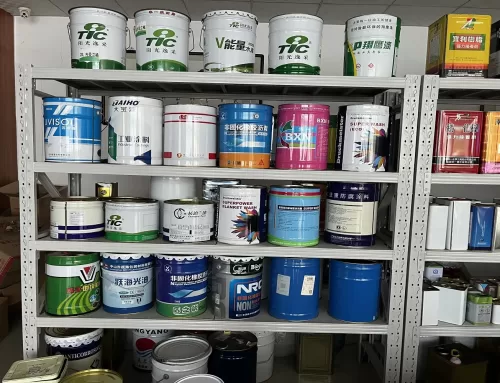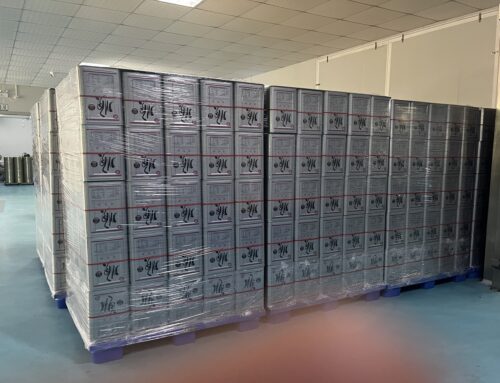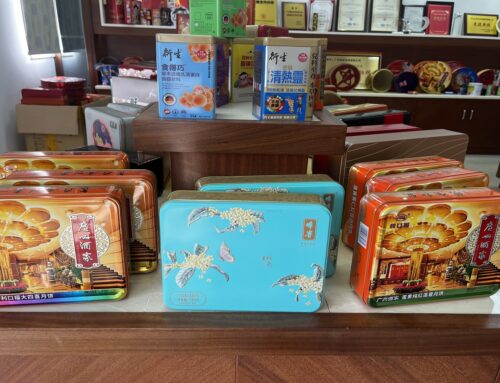Oil Can, Lubricating Oil Can, Engine Oil Can, Chemical Can, these metal cans should be frequently contacted in our lives, then everyone knows how these metal cans are produced, and which aspects we need to choose when buying , Our following article will introduce these situations in detail.
The development history of metal packaging materials
The application of metal packaging materials began in 1200 ad. At that time, bohemia, czechoslovakia produced tinplate, but its production technology was not spread until 1620, when the grand duke of southern germany obtained the technology. Metal packaging has only begun to be widely used. In the latter part of the 17th century, people began to use tinplate to make metal buckets to hold dry food. In the 18th century, people began to use food cans to store food. In 1809, a chef and confectioner nicholas appert in paris invented a can storage method, that is, to put food in a wide-mouth bottle, cover it with a cork stopper, give enough temperature to heat sterilize and remove the air, then seal method can save food for a long time without corruption. In 1810, the british peter durand invented the technology of storing food in tin cans using the above principle, and tin cans were born. Before the second world war, with the improvement of rolling technology and the invention of metal can making machines, the output of tinplate increased greatly. After the second world war, due to the shortage of tin resources, in order to save tin, people developed tin-making materials or tin-free tin-making materials. As a result, poor-thickness tinplate, low-tinplate, and tin free thin steel plate came out one after another. In the 20th century, with the improvement of aluminum metallurgy technology, the improvement of rolling technology and the appearance of aluminum foil, aluminum began to be widely used in the packaging industry.
In recent years, the can-making technology has developed rapidly. It started as a three-piece can consisting of three parts: the can body, the can bottom, and the can lid.Later, the can body and the can bottom joined together and the can lid was composed of two parts. Tablet cans. The traditional three-piece tin soldering can uses tin-lead solder to weld the seam of the can body, which consumes much tin, and the lead content in the solder can contaminate the built-in food. With the appearance of tin free thin steel plate, people have successfully developed seam welding process. The process of seam welding cans is based on contact resistance, electric heating and melting, and then applying pressure to weld the can body. Later, there emerged a bonding can, which uses organic adhesives to bond the can body seam making process. Both of these methods eliminate the pollution of lead to the food in the can, and solve the problem that the tin-free steel plate cannot be tin-welded. They are widely used in the packaging of beer and carbonated beverages. The modern and advanced three-piece can manufacturing methods mostly use the seam welding method and the bonding method. It has broad development prospects, and tin solder cans have been eliminated in advanced countries such as europe, america, and japan. With the widespread use of aluminum in packaging, two-piece cans have appeared. Its structural integrity is strong, easy to decorate and print, and soon occupied the beverage packaging market. However, the production of aluminum consumes a lot of electric energy and its high price limits its usage. However, with the continuous improvement of the can-making process, two-piece cans have been successfully produced using tin-plated thin steel plates and tin free thin steel plates, and automated production lines have been used in industrial production to greatly improve the efficiency of can-making( it can reach 400 cans / min; the production speed of two-piece cans can reach 800-1200 cans / min), so the application prospect of metal cans in packaging is still very optimistic.
(1)Technical requirements for selecting canning equipment
①If it is a solid tank, you also need to know the contents and vacuum requirements.
②The size range of the sealed tank (the range of tank diameter and tank height).
③The annual output of the tank (and converted into shift output or output per minute).
④ The shape of the sealed can body and lid.
⑤ Whether the sealed tank is an empty tank (open top tank) or a solid tank.
(2)Determination of the type and main parameters of the canning equipment according to the two requirements (1) and (2). In (1), the type of equipment used can be determined.
If it is an empty can or a solid can sealer, whether it is a round can or a shaped can, or whether the shape of the can body and the can lid are consistent. Especially when the shape of the can body and the lid are inconsistent (such as an embossed can), the type of can sealer should be determined according to the shape of the can lid, that is, a canned can or a round can sealer, and then according to the can body the shape of the tank requires the necessary modification of the transport system of the tank body (in general, the design of the tank sealing equipment considers that the shape of the tank body and the lid are consistent, and the difference is only in the size of the tank lid) according to (3) and (4). Two requirements, determine the adaptation range and production capacity of the selected equipment (also consider the matching with the production capacity of other equipment on the production line).
(3)Selection of canning machines with different degrees of automation generally, automatic canning equipment should be selected for large-scale production, and the quality of automatic equipment is stable.
It is not affected by human factors, and the labor intensity of workers is small, and the production capacity is large, so it is more used. For small batches and limited funds, a semi-automatic can sealer can also be used. When the output is not reached, multiple units can be used. Manual can sealing machine is generally only suitable for laboratory use, used for testing can sealing, can also use this can sealing machine to make some sample cans as trial marketing products, so that less investment can be used for market analysis first.
(4)Selection of the structure and layout type of the can sealing machine the actual can sealing machine is usually only vertical due to the need to fill the contents. Empty can sealing machine has horizontal. The distinction between vertical and vertical can be determined according to the working attitude of the can body and the can conveying equipment of other supporting equipment.The horizontal can sealing machine often needs to raise the can body to a higher position, and then rely on gravity. The guide cage dumps the can body to a horizontal state and conveys it to the entrance of the can sealing machine. The vertical can sealing machine does not need to raise the can body, and can use a conveyor belt (or chain) to directly convey the upright can body to the can sealing machine inlet. At present, most of the high-speed can sealing machines are vertical. The vertical can sealing machine has a compact structure and is convenient for maintenance and debugging. It should be given priority when selecting. In the vertical tank sealing machine, whether to choose the sealing wheel type or the track type, the characteristics of the two should be analyzed first. The track type combined machine has a compact structure and a small footprint, but the sealing track is difficult to process, requires high accuracy, and has a high manufacturing cost. At the same time, different tank types cannot be shared. The sealing wheel is simple to process and easy to ensure accuracy.Several tank types can often share one type of sealing wheel, the manufacturing cost is low, and the maintenance and adjustment of the machine are easy and simple.As can be seen from the respective characteristics of the two, the rail type can sealing machine is more suitable workshop space is limited, and companies that change tanks infrequently use it. In general, more sealing wheel sealing machines are used. The combination of the advantages of the two can sealing machines also has the form of a sealing wheel combined machine, but there is no such product in china. Under the same conditions, the canning machine in the rotating form of the can body should be preferentially selected.The sealing roller of this canning machine can be arbitrarily adjusted with the swing arm, so the diameter of the sealing roller remains unchanged when the tank diameter changes. This allows different tank types to share the same sealing roller. The sealing roller of the eccentric feed can sealing machine can only be adjusted slightly. When the tank type is changed, the sealing roller must be replaced. In the tank body non-rotating can sealing machine, the four sealing roller types are preferred (two for each of the first and second sealing rollers). Because there are many sealing rollers, the crimping quality is high.
(5)Selection of spray can sealing equipment spray cans are different from empty cans, and both ends of the can body need to be sealed. So when choosing canning equipment there are two options. One is to use a horizontal necking, flanging and sealing combined machine.This equipment can simultaneously complete the necking of the tank body and the sealing of the top and bottom cover.It has a compact structure, but its production capacity is low. 60 cans / min, double heads are 120 cans / min; the other option is to use two can sealers to crimp and seal twice, and add a can pouring device and conveying equipment between the two devices.
(6)Selection of solid tank sealing equipment in addition to the requirements of vacuum degree, whether to fill with carbon dioxide gas, etc. When selecting solid tank sealing equipment, it is also necessary to consider whether the contents will overflow during the sealing process. Whether the materials are resistant to corrosion and meet food hygiene requirements. Priority should be given to the filling and sealing machine, the reliability of such equipment should be higher than the split equipment, and the cost is lower.




